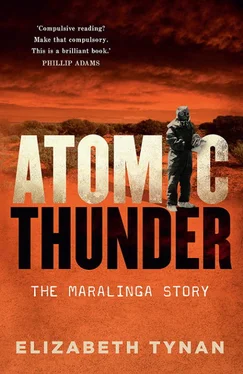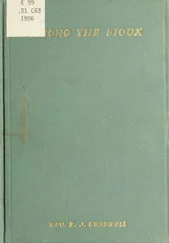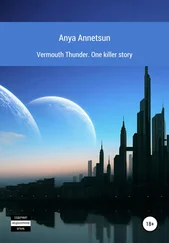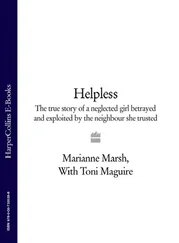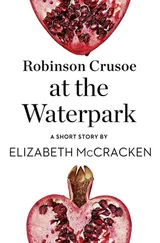When negotiating the Maralinga agreement, the Australians had explicitly forbidden testing an H-bomb on Australian soil. The political ramifications of the much bigger H-bomb were beyond what even a compliant government felt able to deal with. However, while they were forbidden from testing the H-bomb itself, the British needed to test a highly efficient and more advanced device that could operate as a trigger for it. In a top-secret telegram prepared by the Ministry of Defence, the British made their intentions clear to the Menzies government:
You know well the importance we attach to the speediest development of efficient nuclear weapons. You know also… how much we appreciate the immense help given to us by Australia in having our previous nuclear trials take place on Australian territory and in agreeing to the establishment of a permanent proving ground at Maralinga. We have however still one more request to make of you. Maralinga will not be ready until September 1956. Our scientists on the other hand will be ready to make tests in April 1956 which are very urgently needed in the course of our development of more efficient weapons by the inclusion of light elements as a boost. We are most anxious not to lose the six months that would be involved in waiting for the Maralinga range to be ready.
And so, for Operation Mosaic (originally named Operation Giraffe), the British returned to the remote Monte Bello Islands for two tests, one of which became particularly infamous.
Unlike Hurricane, which was a maritime operation to test base surge caused by an atomic weapon, the Mosaic bombs at Monte Bello were detonated from land-based steel towers. The fallout was expected to be much less than from the radioactive water spout of Hurricane – Menzies was told that it be would less than one-fifth of the first British test’s fallout. That was another of the false predictions that riddled the British nuclear weapons test program.
HMAS Warrego and Karangi were pressed back into service to set up the firing sites during October and November 1955. In addition, HMAS Fremantle and Junee assisted by providing transport and logistics during the first Mosaic test. The RAAF pitched in with a variety of support services, such as security, transportation and signalling. These aircraft deployed from RAAF base Pearce in Western Australia later travelled across the continent to RAAF base Amberley, near Brisbane, for decontamination. RAF aircraft also performed a multitude of tasks an atomic weapons test requires, such as surveys of ground contamination and cloud tracking.
Although there were no nuclear tests in Australia during 1954 and 1955, Mosaic was still a rush job. The experience of the 1952 Hurricane test gave the British a good idea of the challenges of the site, but the Monte Bellos were damnably remote, and the two Mosaic tests were entirely different propositions from Hurricane. From conception to first test, the British had only about 15 months to plan. For such a step-up in technology, this was recklessly fast. A lot of equipment, and of course the nuclear devices themselves, had to make the trip from the UK. On this occasion, to save time, the British took the risk of travelling via the Suez Canal, chopping weeks off the journey.
Mosaic G1 was detonated on Trimouille Island just before midday on 16 May 1956. It was controlled from a Royal Navy ship anchored in a lagoon about 25 kilometres away. It had an approximate yield of 15 kilotonnes, 10 kilotonnes less than Hurricane. The mushroom cloud rose higher than predicted, up to 6400 metres instead of 5200 metres.
The main event came a few weeks later. Mosaic G2 remains the biggest atomic device ever exploded on Australian soil. This device was also tower-mounted, this time on Alpha Island. Its yield was disputed for years and was noted by the Royal Commission as being 60 kilotonnes. Many commentators and scholars now accept it was 98 kilotonnes (although some continue to maintain that it did not exceed 60 kilotonnes, and the British have not publicly released yield data). Its cloud rose 14 000 metres, instead of the predicted 11 000 metres, and proceeded to spread east across the entire continent, causing considerable consternation in the media and among the public. Between G1 and G2, Howard Beale, who had apparently misinterpreted information from the British authorities, claimed publicly that the second Mosaic test would be smaller than the first. This assertion was so far from the truth that the statement contributed to public panic when G2 was detonated. Many people believed that something had gone terribly wrong and the massive explosion was some kind of nuclear accident. As the minister responsible, Beale had to scramble to dispel public fears.
In his autobiography Beale recounted an anecdote from his media trip to Maralinga in June 1956. (Beale’s autobiography noted this trip took place in July 1956 to the Woomera weapons test range, rather than Maralinga, but since the second Mosaic test occurred on 19 June 1956, the same day that journalists arrived at Maralinga, it seems likely this was one of the several inaccuracies in his autobiographical account.) Maralinga was being highlighted at the time in media publicity and Mosaic was played down. While the papers reported on Mosaic, they were not at Mt Potter to witness it, as they had been for Hurricane. At Maralinga, visiting media representatives were alerted to allegations of what they believed were unacceptably high levels of radiation heading to the mainland from Monte Bello following G2. A rumour swept through the dining room during the evening meal, leading to a mass exodus of the editors and journalists to call their offices. The rumour suggested that a miner in the Pilbara town of Marble Bar (roughly 1000 kilometres to the northwest of Maralinga, but close to the coastline near the Monte Bello Islands) had detected significant radiation on his Geiger counters. This mobilised the journalists and gave Beale some uncomfortable hours as he attempted to kill the rumour and restore order to the restive media contingent. Given the poor state of communications to the Monte Bello site, this took some time.
Beale, after finally receiving the reassuring words he needed from the AWTSC chair Leslie Martin, who was at Monte Bello, issued a dramatic media statement at midnight saying that most of the radioactive fallout had been deposited in the sea, although some was drifting at very high altitude and posed no risk. His later account stated:
I learnt again from this that newspaper editors may be gracious guests, but when it comes to a sensational news story they are newsmen first and foremost. Nevertheless they co-operated in an awkward situation, and faithfully kept their word to me by damping the story down as far as they could.
That media representatives damped down the story to assist Beale is a revealing comment. It probably speaks to the kind of relationship Beale had developed with the media and the closeness to official sources that was maintained by media practitioners at the time. One story published by the Sydney Sun was headlined ‘Threat to 3 towns’. It began, ‘All Australia is anxiously watching a radio-active cloud – result of the atomic blast on the Monte Bello islands on Tuesday’. Beale was quoted citing Martin: ‘Prof. Martin… has reported to me that conditions of firing were ideal and there was absolutely no danger to the mainland. The path of the cloud was followed by plane, and last night the cloud was over the sea, 100 miles off the north-west coast’.
The story also quoted the deputy prime minister Arthur Fadden, who defended Beale and the scientists over the incident in the face of attacks from the leader of the Opposition Doc Evatt. In federal parliament Evatt indicated that the ‘dogmatic statements and assurances given over and over again by the Minister for Supply’ were insufficient to meet public concern. Fadden assured parliament there would be a full inquiry into the incident. In the end, there was not.
Читать дальше
